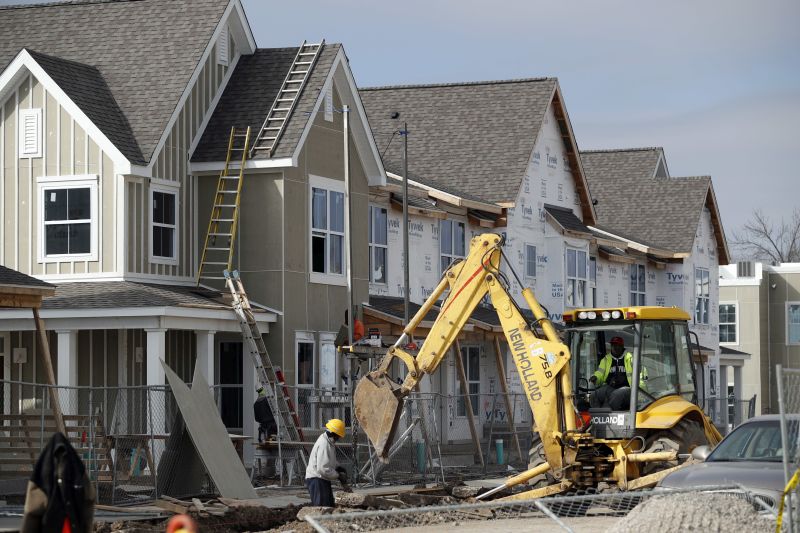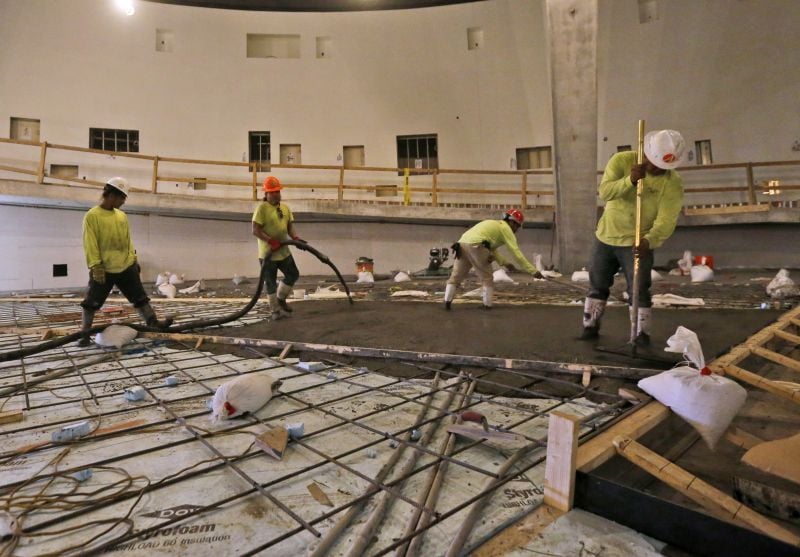A troubling trend of construction firms illegally hiding workers inshell companies to avoid paying state-required workers'compensation coverage began emerging in Florida in the early2000s.
|Historically, dishonest contractors lowballed large amounts oftheir payroll, undetected. The goal was to under-report employeesand salaries, and lie that employees worked safer jobs than theyreally did.
|Fewer employees, lower payroll and safe jobs reduced workers'compensation premiums. Dishonest construction firms each canillegally shave hundreds of thousands of dollars in premiums ayear. They also can save up to 30 percent or more on contractorlabor costs.
|The shell-company schemes allow this deception and illicitsavings on a much larger scale. Those Florida shell companies werea visible warning of a national trend in workers' compensation premium fraud. Exactfraud losses are in short supply, yet shell-related schemes likelysteal billions of workers' compensation insurance dollars a year,skew honest market competition and contribute to higher workers'compensation premiums.
|Shell schemes often were discovered only when employees startedmaking claims for often-tragic work injuries such as falls fromscaffolding. Hidden in shell companies, insurers had no idea of thenumber of employees creating potential injury exposures.
|The result: Workers' compensation insurers in Floridacollectively were liable for millions of dollars in benefits,payable to injured employees they knew nothing about untilreceiving claims for work injuries.
|Shell networks expanding
The trend today: Shell schemes in construction have risento new levels of scope and sophistication in the last 10 years.Networks of dishonest specialty contractors, labor brokers,facilitators, paid straw shell owners and check-cashing stores canavoid far more workers' comp premiums and taxes than thetraditional premium scams. Shell schemes also have spread to otherstates, especially states with large construction activity.
Shell schemes generally have these illicit goals:
|• Remove and hide payroll to avoid workers' compensationpremiums, state and federal payroll taxes, and overtime pay;
|• Covertly allow cheap cash-paid labor onto work sites;
|• Create a fraudulent layer of insurance coverage between theemployer and injured workers; and
|• Allow construction contractors and sub-contractors tounder-bid honest competitors.
|Construction projects are managed by owners or generalcontractors. Gone are the days when general contractors' ownemployees built housing subdivisions, office complexes and otherbuildings. Specialty subcontractors now are typically hired to dowork such as excavation, plumbing, electrical work, concrete work,framing and drywall.
|
Labor brokers are key cogs in sophisticated shellscams. (AP Photo/Jeff Roberson, File)
|Specialty subcontractors, also looking to reduce their payrollburden, hire labor brokers. They oversee a large a large, transientand uninsured work force. The brokers supply the labor for theconstruction work to be performed. The brokers are not “companies”per say. Rather, they act more like company foremen or fieldsupervisors. They also may be someone simply with phone numbers ofdozens to hundreds of workers to place on a job site whilesupervised by the specialty subcontractor. Labor brokers are keycogs in sophisticated shell scams.
|Then there are “facilitators.” They know construction andstatutory requirements for insurance coverage, and recruit someoneas straw owner of the shell company where workers will be hidden.Shell owners usually create false identities for themselves usingbogus yet official-looking government identification. In Florida,for example, the ID might be a fraudulent Florida driverlicense.
|Shell owners use fake identities
False identities allow the shell-company owners and facilitatorsto simply walk away from or “burn” a shell company if an employeeis injured, or if regulators or law enforcement startinvestigating.
|Investigators have nobody to contact about the activities, andsubsequent worker injuries, involving the shell company. Even ifthe facilitators are identified, they can easily deflect attentionto the straw shell owner as the supposed culprit, except the“owner” now is untraceable. In fact, the shell's address usually isjust a post-office box or rental apartment.
|Working together, the facilitator and shell company owner createa corporation, generically named something like XYZ GeneralServices, Inc. A vague name lets the shell work in multipleconstruction trades, thus increasing usability and profits. Manystates also let persons easily create corporations online, withoutmeeting or verifying identification in person.
|Related: 10 ways in which workers' compensation needs toevolve
|The shell owner has an insurance agent provide a minimalworkers' compensation policy for the new shell company. Thefacilitator usually accompanies the “owner” to the agent meeting,and is identified as a “friend helping set up the business.” Theshell owner usually is described as being new to construction, andoften new to the U.S. The facilitator thus requests and receivesapproval to call the agent and request insurance certificates forlabor brokers.
|Duped insurance agents
Some insurance agents are involved in the scheme, while othersare duped by the facilitator. Either way, a shell owner buys aminimal workers' comp policy, falsely describing the business as asmall, two to four-person company doing work such as drywallinstallation, concrete, brick paving or carpentry.
|The insurer sets the premium without realizing the deception. Asmall premium downpayment lets the facilitator embed the shellcompany into the scheme.
|The labor brokers are complicit in the scheme. They need toprove their labor force is covered by workers' compensation inorder to perform the work with the specialty contractors as if theyare legitimate subcontractors.
|Facilitators thus provide (rent) the name and paperwork of thenew shell company for the labor broker to use. This protects themif state regulators inquire or the insurer audits the specialtycontractor. Specialty contractors usuallyare aware of the scheme. Yet they are insulatedfrom civil or criminal liability most of the time, unless theybegin performing shell company functions such as payroll.
|Related: Couple arrested on workers' comp insurance premiumfraud charges
|The small workers' compensation policy gives the labor brokerthe “golden ticket” for a work crew to do construction work, whatappears to be a valid certificate of insurance. However, they usemany more workers than were reported at the time of application.The straw shell owner likely will disappear, or maybe be hired to“own” other shells.
|The shell owners collect $500-$1,000 per week merely forallowing their name to be used as owner. The shell now is ready tofunnel large amounts of undeclared payroll to cash-paidworkers.
||
Workers' compensation insurers collectively lose billions ofdollars in premiums annually by some estimates. (Photo:Shutterstock)
|Shell names rented out
The facilitators effectively rent out their shell company'sname. More important, the facilitators rent their valuablecertificate of insurance to uninsured labor crews who work as ifthey are affiliated with the shell. In fact, they are independentand uninsured, though may believe in good faith they arecovered.
|General and specialty subcontractors can be directly involved.When contractors request an insurance certificate from uninsuredlabor brokers looking for work for their crew, they are directed tothe facilitator. The facilitator contacts the agent, and has theinsurance certificate in the name of the shell company falselypresented as the uninsured labor broker's company. The number ofemployees covered under a workers' compensation policy are almostnever listed on the insurance certificate, so the massive deceptionis not evident at this point.
|State-required proof of insurance is met, minimally. Thecontractor contracts with the shell owner so the uninsured laborcrew can go to the work site. The labor broker bills thecontractor, who pays for the work from their operating account.That usually is by one check each week, payable in the name of theshell company.
|The checks are taken to a local check-cashing store. Apre-arranged deal was made with the proprietor, who is complicit.All checks made payable to the shell company are cashed, no matterwho presents them. The check-cashing store and facilitator split a5-10 percent fee for each check. The balance goes to the uninsuredconstruction crew for wages. The 5-10 percent cut is much cheaperthan buying workers' comp coverage and paying taxes.
|Because the facilitator rents the policy to numerous laborbrokers who may work on many projects, the large number ofinsurance certificates issued by the insurance agent are lopsidedcompared to the small declared payroll and staff size.
|Schemes discovered after serious injury
Insurers and agents normally don't track insurance certificates.Thus, they often discover schemes only when employees have aserious injury and a workers' compensation claim is made by anemployee who was never reported to the insurer. Insurer auditsoccasionally uncover shell cons as well.
|The facilitator instructs the shell owner to write a check fromthe shell company account, to be cashed at the check-cashing store.In some cases, the owners simply withdraw the cash and deliver itto the facilitator, who hands over the check casher's cut.Electronic transfers are a relatively new payment nuance.
|Related: Overcoming workers' comp faud with detectiontechnology
|The shell's bank account was created under the same falseidentification used to set up the shell. Currency transactions atthe check-cashing store are falsified for checks of at least$10,000. The transactions also are documented to appear the shellowner made the transactions, even though the person cashing thechecks represents dozens of uninsured labor brokers using theshell-company name and insurance certificate to obtain work.
|Shell company owner untraceable
Six suspects in the Tallahassee area were arrested in 2015 forallegedly creating multiple shell companies to hide workers andpayroll. Ringleaders provided fake business cards to work crews.They were told to present the cards to state investigators whoshowed up onsite to inspect for proper workers' compensationcoverage.
|Millions of dollars in wages can be quickly funneled through ashell company. No year-end workers' compensation premium audit willbe conducted because the shell company owner will be untraceable.Nor does the shell pay any payroll taxes. The facilitator alsoroutinely burns the shell and forms a new one once or twice a yearto throw off investigators. The shell may be burned sooner if anemployee has a catastrophic injury.
|Workers' compensation insurers collectively lose billions ofdollars in premiums annually by some estimates. Just 10 laborbrokers negotiated $1 billion of checks in less than three years inFlorida. Phantom workers' comp injuries also add to thefraudulent losses, and potential damage to the commercial generalliability industry.
||
Because such large amounts of cash are involved, premiumscams attract organized crime syndicates that use the same shellsto launder other criminal proceeds. (AP Photo/WilfredoLee)
|Duplicate injury claims
Insurer searches of the Insurance Services Office claimsdatabase now are locating duplicate injury claims for the same dateof loss. The related impact: Injured workers involved in shellschemes are suing insurers under commercial general liabilitypolicies that aren't intended for what should be workers'compensation claims — hence, duplicate claims. The losses incurredby these schemes are tangentially imposing a cost burden on generalliability insurers.
|Related: Cost-contaiment strategies for workers' compclaims
|Because such large amounts of cash are involved, premium scamsattract organized crime syndicates that use the same shells tolaunder other criminal proceeds.
|Corrupt contractors with lower labor costs also can illicitlytake over entire markets by lowballing competitors for contracts.This is happening in Florida, Georgia, Tennessee, Colorado andother states. Honest contractors may go out of business, layoff employees, or start cheating just to survive.
|That indignity is magnified when workers' compensation insurerspass fraud losses onto business clients in higher premiums. Theupshot is a steady erosion of law-abiding contractors who pay truepremiums.
|Sue for workers' comp benefits
Significant tax revenue also is denied to municipalities,states, the federal government, Social Security, Medicare andunemployment insurers.
|Injured workers also get inadequate medical care. They must suefor workers' compensation benefits, and are trapped in litigationto get bills paid by workers' comp or general-liability policies.The unpaid bills and shattered lives are passed along to everyonein higher medical costs, and increased burdens on safety nets suchas Social Security disability. Among the needed reforms:
|• Law enforcement needs adequate funding;
|• State laws must keep pace with shell conspirators so crookedfacilitators and contractors are held accountable; and
|• Insurers and agents must look tighten their application,underwriting and auditing to spot the signals of shell cons.
|“Corrupt construction companies know the limitations andpractices of law enforcement and the insurance industry,” saysMatthew Capece, an attorney with the UnitedBrotherhood of Carpenters, which has tracked construction fraudsince 1989. “Swindlers exploit those weaknesses for large profitsand hundreds of millions in premium-fraud losses to insurers.”
|Urgent action is needed to reverse the spread of shell schemes,protect the integrity of the construction industry, and stemdraining losses for workers' compensation insurers.
|Related: 3 keys to a successful workers' compensation fraudinvestigaton
|David M. Borum, CFE, CFIC, CIFI, is assistant vicepresident-special investigations unit, at Swiss Re America.Geoffrey R. Branch, M.S., CFE is senior investigator-specialinvestigations unit, group risk management, at Swiss ReAmerica.
|This article originally appeared in the Journal of Insurance Fraud in America.It is re-posted with the permission of the Coalition AgainstInsurance Fraud
Want to continue reading?
Become a Free PropertyCasualty360 Digital Reader
Your access to unlimited PropertyCasualty360 content isn’t changing.
Once you are an ALM digital member, you’ll receive:
- All PropertyCasualty360.com news coverage, best practices, and in-depth analysis.
- Educational webcasts, resources from industry leaders, and informative newsletters.
- Other award-winning websites including BenefitsPRO.com and ThinkAdvisor.com.
Already have an account? Sign In
© 2024 ALM Global, LLC, All Rights Reserved. Request academic re-use from www.copyright.com. All other uses, submit a request to [email protected]. For more information visit Asset & Logo Licensing.








